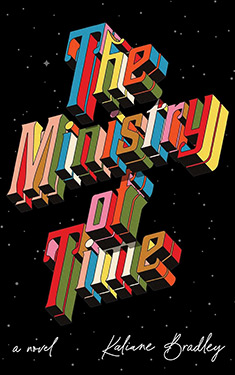
Added By: Administrator
Last Updated: valashain
Mars Life
| Author: | Ben Bova |
| Publisher: |
Tor, 2008 |
| Series: | The Grand Tour: Book 16 |
|
0. Tales of the Grand Tour |
|
| Book Type: | Novel |
| Genre: | Science-Fiction |
| Sub-Genre Tags: | Human Development |
| Awards: | |
| Lists: | |
| Links: |
|
| Avg Member Rating: |
|
|
|
|
Synopsis
Jamie Waterman discovered the cliff dwelling on Mars, and the fact that an intelligent race lived on the red planet sixty-five million years ago, only to be driven into extinction by the crash of a giant meteor. Now the exploration of Mars is itself under threat of extinction, as the ultraconservative New Morality movement gains control of the U.S. government and cuts off all funding for the Mars program.
Meanwhile, Carter Carleton, an anthropologist who was driven from his university post by unproven charges of rape, has started to dig up the remains of a Martian village. Science and politics clash on two worlds as Jamie desperately tries to save the Mars program and uncover who the vanished Martians were.
Excerpt
DATA BANK
Mars is the most earthlike planet in the solar system. But that doesn't mean that it's very much like Earth.
Barely half of Earth's size, Mars orbits roughly one and a half times farther from the Sun than Earth does. It is a small, cold, seemingly barren world, a frozen desert of ironrust sands from pole to pole.
Yet Mars is a spectacular world. The tallest mountain in the solar system is the aptly named Olympus Mons, a massive shield volcano three times higher than Everest, with a base as wide as the state of Idaho. The main caldera at Olympus Mons's summit could swallow Mt. Everest entirely. Other huge volcanoes dot the Tharsis highlands, all of them long extinct.
Almost halfway across the planet is Hellas Planitia, an enormous impact crater nearly the size of Australia and some five kilometers deep, gouged out when a huge meteor slammed into Mars eons ago.
Then there is Valles Marineris, the Grand Canyon of Mars, a gigantic rift in the ground that stretches farther than the distance between Boston and San Francisco, a fracture that is seven kilometers deep in some places and so wide that explorers standing on one rim of it cannot see the other side because it is beyond the horizon.
The atmosphere of Mars is a mere wisp, thinner than Earth's high stratosphere. It is composed mostly of carbon dioxide, with traces of nitrogen, oxygen, and inert gases such as argon and neon. The air pressure at the surface of Mars is about the same as the
pressure thirty- some kilometers up in the high stratosphere of Earth's atmosphere, so thin that an uncovered glass of water will immediately boil away even when the temperature is far below zero.
Which it is most of the time. Mars is a cold world. At midsummer noon on the Martian equator, the ground temperature might get as high as seventy degrees Fahrenheit. But at the height of a person's nose the temperature would be zero, and that night it would plunge to a hundred below or even colder. The thin Martian atmosphere retains almost none of the Sun's heat: it reradiates back into space, even at noon on the equator.
There is water on Mars, however. The polar caps that can be seen from Earth even with an amateur telescope contain frozen water, usually overlain with frozen carbon dioxide: dry ice. Explorers found layers of permafrost—frozen water—beneath the surface, enough underground water to make an ocean or at least a sizable sea.
There is abundant evidence that water once flowed across the surface of Mars. The entire northern hemi sphere of the planet may once have been an ocean basin. Mars was once considerably warmer and wetter than it is now.
But today the surface of Mars is a barren desert of highly oxidized iron sands that give Mars its rusty red coloration. Those sands are loaded with superoxides; the planetwide desert of Mars is more like powdered bleach than soil in which plants could grow.
Yet there is life on Mars. The First Expedition discovered lichenlike organisms living inside cracks in the rocks littering the floor of the Grand Canyon of Mars. The Second Expedition found bacteria living deep underground, extremophiles that metabolize solid rock and water leached from the permafrost.
And the human explorers discovered an ancient cliff dwelling built into a niche high up the north wall of the Valles Marineris. There were once intelligent Martians, but they were wiped out in a cataclysm that scrubbed the entire planet clean of almost all life.
Curious explorers from Earth sought to understand those longvanished Martians. But others of Earth preferred to ignore them, to pretend that they had never existed. In an irony that stretched across two worlds, the greatest discovery made on Mars led directly to the determined effort to put an end to the exploration of the red planet.
Copyright © 2008 by Ben Bova
Reviews
There are currently no reviews for this novel. Be the first to submit one! You must be logged in to submit a review in the BookTrackr section above.
Images
No alternate cover images currently exist for this novel.



















 Full Details
Full Details





